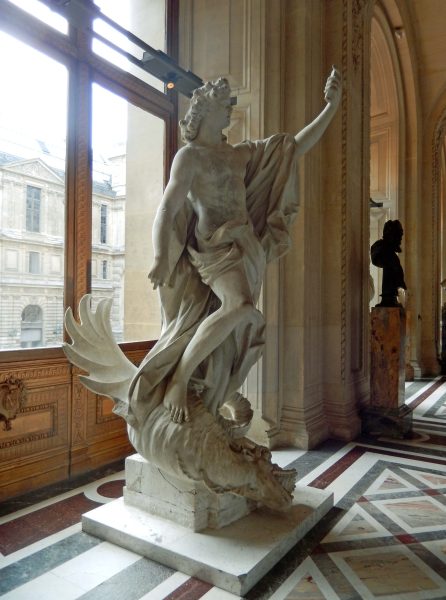The Olympian Altis—in Greek religion, the sacred grove of Zeus—is a quadrangular area walled on three sides and bounded by the Kronion Hill, a small mountain, on the fourth. Within the Altis is one of the highest concentrations of masterpieces from the ancient Greek world, including the unidentified (to Ted and me) ruins pictured below. The area was destroyed by earthquakes in 522 and 551 AD and, in the years after the earthquakes, it was covered by 20 feet of dirt until the French began excavating the site around 1829. Just for fun, picture carefully digging 20 feet of dirt out of this entire area (a teaspoonful of dirt at a time if you’re an archeologist?) to expose the buried ruins.

Below is a picture of the ruins of the Temple of Hera, the oldest temple in the Altis. It was originally a joint temple of Zeus and Hera until a separate temple was built for Zeus.
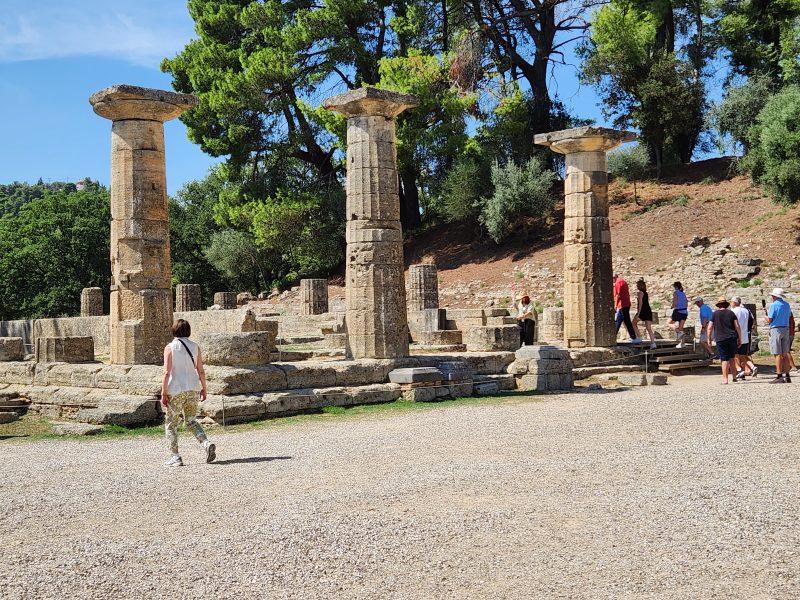
A second column originally stood beside the one pictured below inside the Votive Temple of Ptolemy II. Each column was over 30 feet high. Atop the columns were golden statues of the prince of Egypt, Ptolemy II Philadelphus, and his older sister and second wife, Arsinoe II. (Sister and second wife???) Although sibling marriage was a traditional practice of the Egyptian pharaohs, it was shocking to the Greeks, who considered it incestuous. The temple was built in honor of the prince and his wife/sister. (The picture isn’t crooked–the tower leans.)
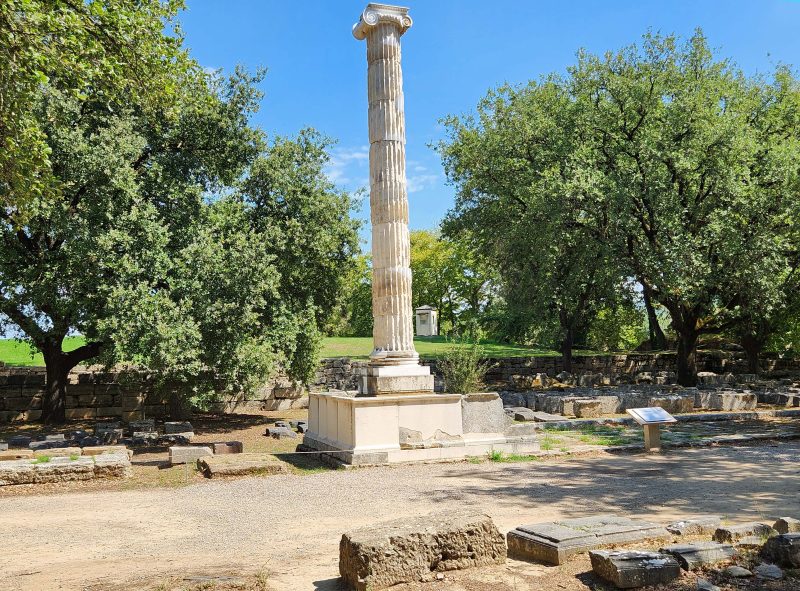
The photo below shows the ruins of the Philippeion, originally a circular monument celebrating Philip’s victory at the battle of Chaeronea. Within the monument were ivory and gold statues of Philip II of Macedon and members of his family: Alexander the Great (Philip’s son), Olympias (Philip II’s fourth wife), Amyntas III (Philip’s father), and Eurydice I (Philip’s daughter). It was the only structure in the Altis dedicated to a human.

The largest and most important building in the Altis was the Temple of Zeus. All that remains of the temple after the earthquakes are the single standing pillar and the rubble on the ground, as seen in the photo below. The pillar stood inside the temple and held a 40-foot tall gold and ivory statue of Zeus, one of the Seven Wonders of the Ancient World. The sculpture showed Zeus, the god of the sky and the chief Greek deity, seated on an elaborate throne holding a figure of Nike (the goddess of victory) in his right hand and a scepter in his left.
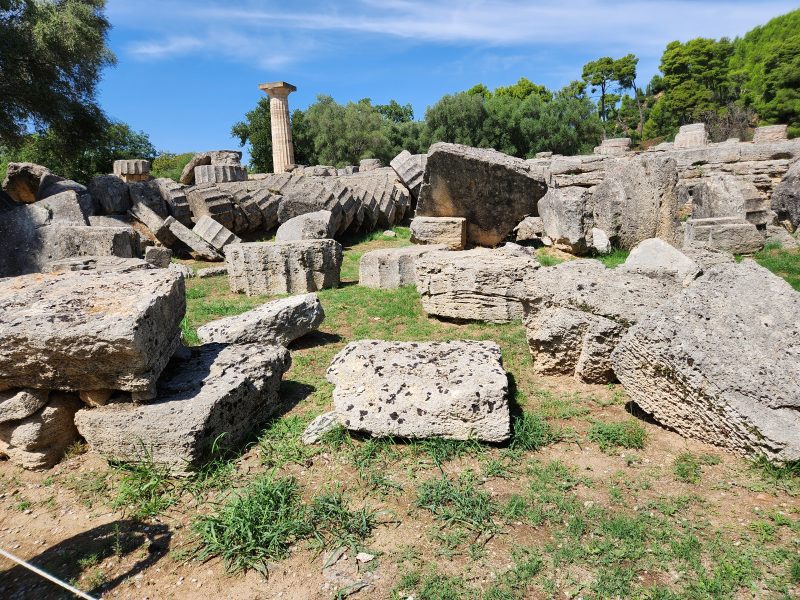
The Echo Stoa, a colonnade, was the boundary of the east side of the Altis. Its popular name was the Echo Colonnade because a spoken sound in the colonnade was echoed at least seven times. There was a narrow passage between the colonnade and the east Altis wall. East of the wall was an embankment that separated the stadium from the Altis and blocked the view of the finish line on the field from the sanctuary. A covered entrance through the embankment—essentially a stone vaulted tunnel—connected the stadium to the Altis and was used by the athletes and the umpires.
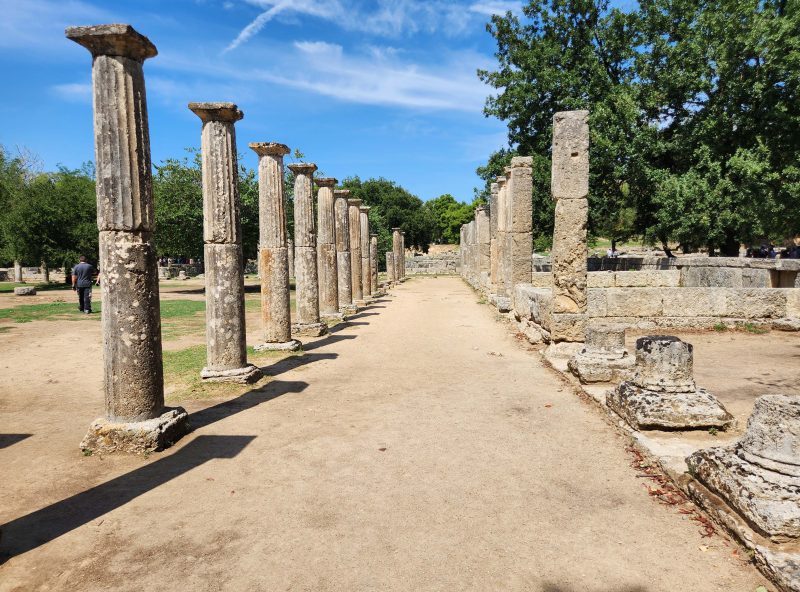
The first Olympic games were held in the stadium in 776 BC as part of the Festival of Zeus. The games continued every four years until 393 AD when they were discontinued, perhaps in connection to a fire that destroyed the Temple of Zeus at that time. Another possibility is that the Roman Emperor Theodosius I (who ruled Olympia at that time) banned the games because they celebrated the god Zeus, and Theodosius wanted to promote Christianity.
The photos below show the entrance gate to the stadium and the stadium field. The field was wide enough to accommodate 20 runners at a time. The stone starting lines at each end of the field are still in place. Earth embankments on the east and west sides of the stadium could accommodate up to 40,000 spectators. The only stone seats were on the south side and were used by the chief judges and high officials. The north side was bounded by the Kronion Hill.

Check out the wife preparing to take a picture of her “Olympian” husband at the starting line on the field.

The second tour stop of the day was the Archeological Museum of Olympia. Among the displays was the sculpture of the Lapith women (below) that originally decorated the Temple of Zeus. The Lapiths and the Centaurs were mythical tribes of northern Greece and had a battle at a wedding feast. The Centaurs (half horse, half man) drank too much wine and attempted to abduct the Lapith women. The women in the sculptures are portrayed as anxiously watching the battle.
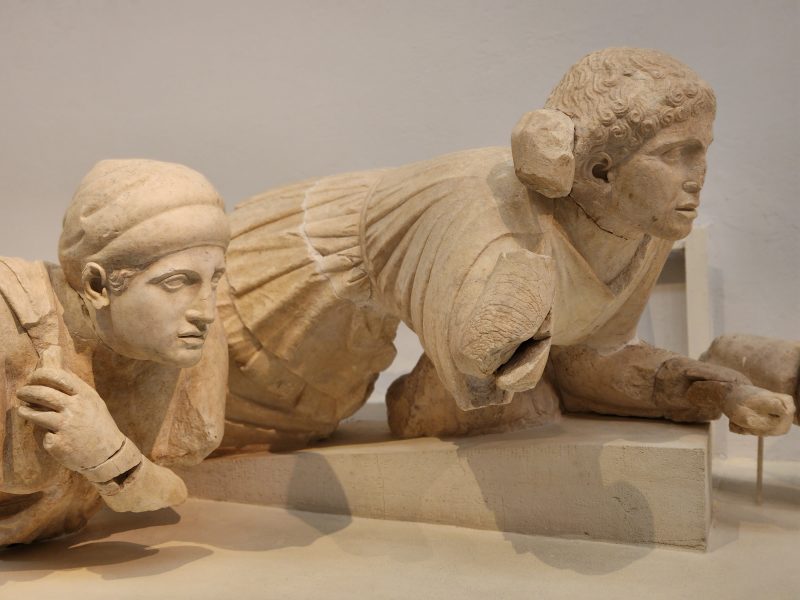
The photo below shows a part of the decoration from the west pediment of the Temple of Zeus. It represents the battle between the Lapiths and the Centaurs in Thessaly (the one the Lapith women were watching) and is symbolic of the Greek victory over the barbarian Centaurs, or analogously, the victory of reason over man’s savage nature.
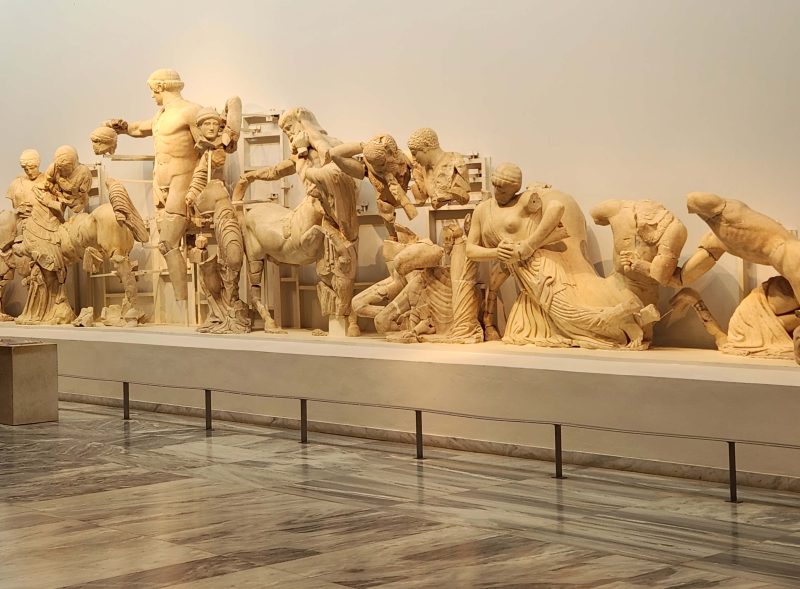
Here’s a picture of the Seer, aka the Old Diviner. It was on the north corner of the west pediment of the Temple of Zeus. The Old Diviner’s intense facial expression is unique for this early period of classical art. To make ancient classical art like this more fun, the popular current name for this sculpture is “The Seer calling Zeus on his cell phone.”

This reminded me of Ted’s and my visit to the Louvre, where we saw the statue titled “Apollo Defeats the Serpent,” now nicknamed “Apollo taking a selfie.”
